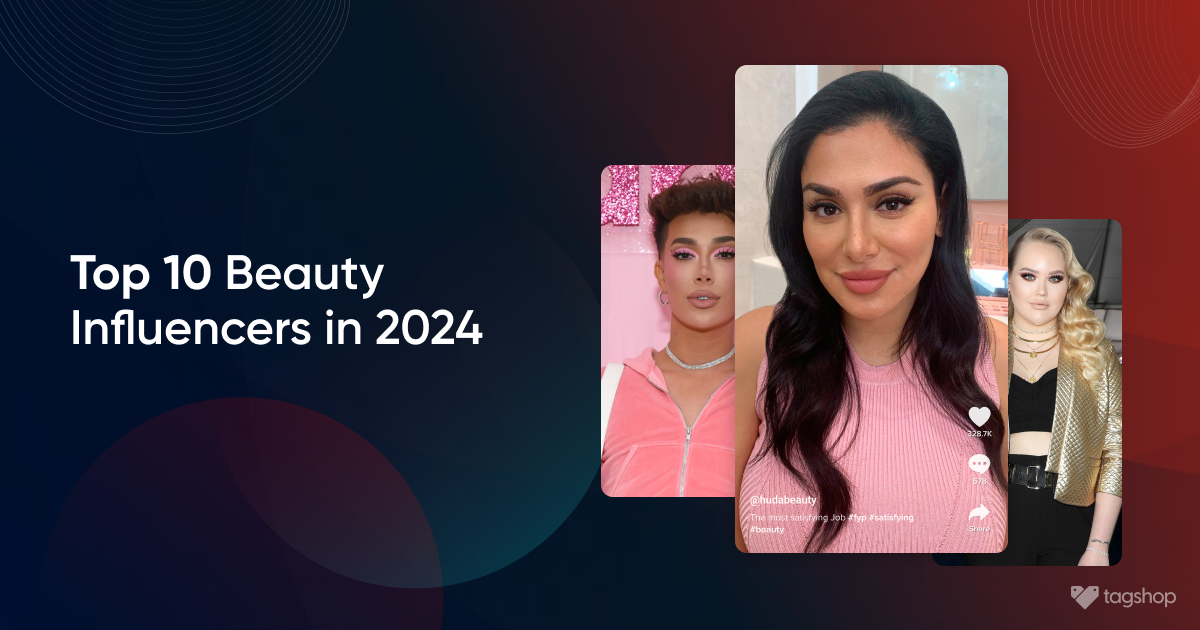Everything You Need To Know About Influencer Marketing
Scroll through any platform – Instagram, Facebook, or TikTok – it’s almost impossible not to come across some form of influencer marketing. They are everywhere, across categories, creating content in every format (short-form videos, stories, vlogs, and content) – and this is just the beginning!
Though influencer marketing started 15 years ago, it came to a substance only after the expansion of social media. Now, everyone on the internet seems to love creating or watching content created by their favorite influencers.
While this segment is growing rapidly, the biggest challenge that marketers, let alone influencers, face is authenticity. Those who can come across as ‘real’ are reaping a major slice of the benefits.
This guide will back your marketing efforts from understanding what influencer marketing is, to its future, building a strategy that performs, and tools that can help you win.
What Is Influencer Marketing?
Simply put, brands partnering or collaborating with influencers and content creators to promote their product through endorsements or recommendations is influencer marketing.
Usually, brands collaborate with influencers to spread awareness, but this effort also leads to great sales as influencers are not just people having a prominent number of followers on social networks, they are a source of decision-making for consumers.
But who can be defined as influencers? Influencers can be social media creators, bloggers, or even podcast hosts. Influencer marketing dates back to being a powerful form of marketing in history.
From Roscoe ‘Fatty’ Arbuckle’s endorsement of Murad – a Turkish brand of cigarettes in 1905, to Santa promoting Coca-cola in 1931, to finally in 2010, when social media started making waves. Influencer marketing has grown vastly but hasn’t changed a lot.
Influencers still are actively sharing insights about their lives and promoting brands they like across categories. The only difference is, now, influencers are way more active than they ever were.
Statistically, over 71% of influencers admit to having increased the amount of content they produce and share. As influencer marketing grows, the need for clear and compelling communication between brands and creators is more important than ever. Canva’s Business Proposal templates make it easy to craft professional proposals that outline collaboration goals, deliverables, and expectations. Perfect for brands reaching out to influencers or creators looking to pitch partnerships.
And, with a massive rise in the number of channels businesses are selling on, AR is becoming the game-changer, while a metaverse future is still in the pipeline. Influencer marketing is predicted to only become enormous.
The Power of Influencer Marketing
“There’s power in putting the right products in front of the right audience – with an authentic voice.” – Nii Ahene
It’s the basics of consumer behavior – people feel connected to people when they share something in common. And what’s common between influencers and people? Well, for one, they are both consumers.
In fact, 49% of consumers depend on influencer recommendations.
Influencer marketing has proved to be largely impactful and is expected to grow even more. Well, that’s what the stats suggest.
- Influencer Marketing Industry Reached $21.1 Billion in 2025 and is expected to grow further.
- Influencer marketing campaigns earn $5.78 for every dollar spent.
- 68% of Marketers Intend to Increase their influencer marketing budgets.
The growth is relentless. But, what’s pushing it? This growth is due to various reasons, a major one being the introduction of short-form video content on social media platforms, including TikTok, Instagram, YoutTube, and even Facebook, which catalyzed social media consumption.
There’s so much content on the web, and so many brands looking out to leverage it. However, one category is taking the center stage among all this – Micro-Influencers.
Stating facts, micro-influencers make up 47.3% of the overall influencer population.
Let’s hear about it more.
Taking The Lead: Micro-Influencers
When it comes to people engaging with content on social media, it’s authenticity > agenda, which is why most consumers trust recommendations from their favorite influencers. And with micro-influencers, this trust takes up a jump because micro-influencers are all about relatability, credibility, and authenticity.
According to Facebook data, 79% of the people who follow micro-influencers searched for more information about any brand, while 49% made a purchase online or offline.
According to experts, smaller industries will choose to collaborate with micro-influencers simply because they exhibit relatability and authenticity – which consumers seek the most.
Whether micro or macro, Influencer marketing has proved to be a game-changing brand strategy. Enabling brands to leverage social content to boost direct revenue. Continue reading to know the importance of influencer marketing:
How Important Is Influencer Marketing For Brands?
The past couple of years has acted as an overdue catalyst for the marketing and advertising industry, while the pre-existing consumer preferences for online commerce are merely the same.
These changes have also impacted what influencer marketing meant for brands.
1. Consumers Have Become Completely Digital & Privacy-First
Instagram now is video-first and shopping-centric; TikTok has become usual; podcasts are almost a part of everyday routine. And consumers dig a seamless, uninterrupted, ad-free experience wherever possible. They make liberal media consumption choices when choosing what they engage with and who they trust.
Now, brands have to put in a gruesome effort to gain customer attention by producing entertaining and appealing content. This is where influencer marketing comes to the rescue, as the content created by influencers can effortlessly fetch attention, credit to its aesthetics.
Further, with social media consumers’ attention span reducing drastically and still spending long hours scrolling through their feeds to find inspiration – collaborating with influencers can make them active and willing participants, or maybe buyers.
2. Reach Out To Your Target Audience Easily
By collaborating with your niche influencers, you can easily expand your brand’s reach to the targeted audiences, which is a quintessential part of every brand’s marketing strategy.
However, reaching out to the targeted audience is often painstaking and requires a lot of effort. But, brands can always skip past this step with influencer marketing.
For example – SmarTrike is a children-based brand that collaborated with three mom influencers, including Giuliana Rancic. In the post uploaded by her, she came up with a post that showed off a baby stroller from the brand.
The post generated close to 20,000 likes. Through the campaign, SmarTrike was able to get nearly 76,000 likes and reached out to more than 12M people. This happened because the brand targeted influences having a predominant following of young moms.
3. Increased Audience Engagement
Without having a good audience engagement, generating likes and comments on posts can be difficult, irrespective of the number of followers you have. Here, influencer marketing can be of great help.
Primarily, influencer collaborations improve the quality of your content and make it more consumer-driven, which increases its chances of getting attention from the target audience. Visual marketing rules!
Secondly, influencers sharing content mentioning your brand will work effortlessly with their audiences’ attention. If they like the content, they might share it further with their peers, enhancing its reach.
For example, many brands collaborate with influencers to announce giveaways or offers in action, which gets a lot of traction from people.
4. Derive User-Generated Content
Jumpstarting UGC campaigns with influencers is a great way to inspire more participation of people. This is what Daniel Wellington did and successfully generated more than 2 million pictures and videos on Instagram.
As a part of their promotional strategy, they gave away their products for free to some shortlisted influencers. They curated an exclusive #danielwellington to prompt social media users to share content featuring their products. The best content then got featured on Instagram with #DWpickoftheday. So it’s not surprising that the brand’s profit increased by 214% in a year.
In addition, 93% of millennials trust and reply to online reviews. Consumers generally trust online reviews before making a purchase decision, and this phenomenon is not exclusive to millennials.
Getting reviews from influencers about your products can alter the perception that potential users might have of your brand. And by featuring it across your web pages, you create social proof that influences the purchase decision of consumers.
Pro Tip: To be on point with influencer reviews, share an outline of what you expect from them. This will increase the quality of your testimonials.
How To Build An Influencer Marketing Strategy?
By creating a strategy for influencer marketing, you become sure of not only your next steps but also of the result that you want to derive from your efforts. Here are a few things to consider:
1. Determine Your Goals
Goal-setting is the preliminary step for a good strategy. First, determine why you want to run an influencer marketing campaign and what you want to derive. While increasing sales and revenue is a no-brainer, there is a lot more than a good influencer marketing strategy can do for your brand.
2. Brand Awareness and Reach
Influencers typically have an enormous following. Collaborating with them can get your brand’s name before people who might not have heard about it ever before.
Further, they learn about your brand from someone they trust, which makes igniting their interest in knowing more about your brand easy.
3. Expanding Your Customer Base
If you are looking forward to expanding your existing customer base, there is no better way than marketing it through an influencer.
Note: It might get difficult to convince the influencer why your brand is an optimum fit for their followers. But, if you manage to get through it by creating a strong campaign, reaching customer expansion can get easy.
4. Supporting Lead Generation
Irrespective of your ultimate goal of collaborating with influencers, the possibility of getting better sales, or at least lead generation, is undoubted.
By leveraging their credibility, influencers can tap into the impulse of their followers and make them feel the need for the product/service they’re endorsing. Hence, helping the brand gain attention, lead generation, or conversions.
After goal-setting comes performance analysis, these are metrics that you must track throughout your campaign and get a knack for its performance. For instance, if your goal is to enhance sales, keep track of the signups, product purchases via influencer promo code, etc.
5. Find An Influencer That Fits
Before beginning to work with influencers, you must take your time to understand which one would be the right fit for your brand.
Would you want to opt for micro, nano, macro, or celebrity influencers to endorse your product? Largely, celebrity influencers have a low engagement rate and a high opening rate. Hence, the resultant ROI might not be at par.
But, for micro and macro influencers, people engage with the content and get inspired to know more about the brand.
6. Connect With Influencers
Once you are well-versed with your influencer marketing strategy, starting to connect with relevant local influencers is a best marketing practice to get better results for a local business.
There are multiple ways to find industry-specific influencers that will work for you. Depending upon the platform you are looking to promote your brand on, some tools can help you classify influencers in your niche.
But another promising way to achieve this is by using hashtags. For example, search for #sponsored posts, and you will come across a variety of influencers, some of which might also resonate with your brand.
7. Review & Refine The Campaign
Once you have started with your campaign, make sure that you keep reviewing its performance about your goals.
Keep track of your influencer marketing campaign based on your performance metrics, sales, conversion, or brand awareness and audience engagement. Some tools can help you achieve this, apart from insights provided by individual social media platforms.
Best Influencer Marketing & Management Tools
1. Grin
Grin is the leading influencer marketing management platform, which efficiently integrates with various eCommerce platforms and creates valuable brands through the power of organic creator partnerships.
You can choose the ideal fit for your brand from over 30M influencers, send emails, ship products, provide affiliate codes and content, and get notifications when posts go live. With Grin, you can also track your KPIs, create custom reports, and know your ROI through affiliate marketing.
Other features that give brands the power to run high-performance influencer campaigns and drive revenue are:
- Aggregates all your influencer and user-generated content and allows you to filter by color, metrics, and more.
- It also gives you tools to repurpose your Instagram boards or video stories to maximize impact.
- After choosing the influencer of your niche, you can create briefs, send proposals, track produced content, and manage everything within your campaign atelier.
- Grin supports integrations with prominent eCommerce platforms, such as Shopify, WooCommerce, and Magento.
2. CreatorIQ
CreatorIQ helps quickly and easily find the ideal creators for your brand through its expansive influencer databases.
The platform integrates directly with the social platform APIs, and AI powers its algorithm and analyzes more than 1B social accounts. Further, the brands can also understand how many people view the content and make predictions of what the reach will look like.
Some other features that the platform provides are:
- Influencers can register themselves in your network and fill in details about their interests and payment options, amongst other things.
- It takes a ‘content-first’ approach to its influencer discovery, which means it isn’t just looking at the keywords in the bio or what the influences describe themselves like. But, it looks into every aspect of content and interests, even emojis, to categorize influencers.
- The platform enables you to share certain parts of the campaign using private links.
- You can also determine if an influencer’s audience is authentic or not through its ‘Integrity Quotient.’
There is a lot that you can do with CreatorIQ.
AI Influencers: The Future of Influencer Marketing
Innovation is key to a brighter future; hence, influencer marketing is also experiencing an innovation that is leading it to a brighter future. That innovation is the introduction of AI influencers. The AI influencer generator is a tool that helps to make these hyper-realistic avatars that are revolutionizing the way brands engage with audiences. From talking about the features of a product to creating unboxing videos, AI influencers have taken over the digital marketing landscape.
Using top AI influencers is just a recent trend that is supposed to fade away with time, but it is here to stay. Adopting an AI influencer for an influencer marketing strategy not only helps you get in ahead of the curve but also opens gates for storytelling, audience targeting, and brand differentiation. AI influencers are developing a stronghold on the influencer ecosystem and assisting brands to reach their desired goals.
Why Brands Are Making A Shift Towards AI Influencers in Marketing?
AI influencers are rewriting the rules of influencer marketing AI. Here’s why brands are obsessed:
- 24/7 Hustle with Zero Drama: Unlike human influencers, virtual influencers don’t sleep, cancel gigs, or spark controversies. They churn out content round-the-clock, aligning perfectly with brand campaigns.
- Scalability and Versatility: Using AI influencers, brands can easily adapt instantly to trends, even adapting to different languages and cultures.
- Global Reach: AI influencers break geographical boundaries and cultural barriers, adapting accordingly, helping brands to reach a wider audience.
- Cost-Effective and Global Reach: Digital influencers skip hefty fees and work across time zones, cutting costs.
Improve Brand Image: Utilizing AI influencers shows that the brand is innovative and up to date with the latest tech advancements, appealing to tech-savvy and younger audiences.
Must Read: How to Create an AI Influencer?

Wrapping It Up
With users growing need for authenticity and dependability on voices they can trust, influencer marketing and other brand efforts can greatly help stand out.
Ecommerce brands, in specific, can potentially benefit from partnering with influencers, as making sales and building brand affinity comes as an inherent benefit of this strategy.
Further, with the majority of the firms intending to increase their spending on influencer marketing, it is about time that you get functional too.








